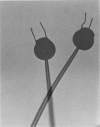Abstract
Experimental evidence indicates that during phototropism, Phycomyces sporangiophores use their own net rotation to convert an apparently spatial stimulus to a temporal one. Conversion to a continuous temporal stimulus insures that phototropism never adapts as long as the spatial asymmetry in illumination is maintained. If this temporal stimulus is circumvented by rotating the cell backwards so that there is no net rotation of some of the receptors relative to the light, the response can be reduced by two-thirds. The system thus adapts to the incident light, resulting in a reduced response. For the illumination of a transparent cell, this compensating rotation speed is 10 degrees/min counterclockwise and probably corresponds to the photoreceptor rotation in the most effective part of the growing zone. We infer that this region is in the upper portion of the growing zone and that the receptor system rotates integrally with that region of the cell.
Full text
PDF

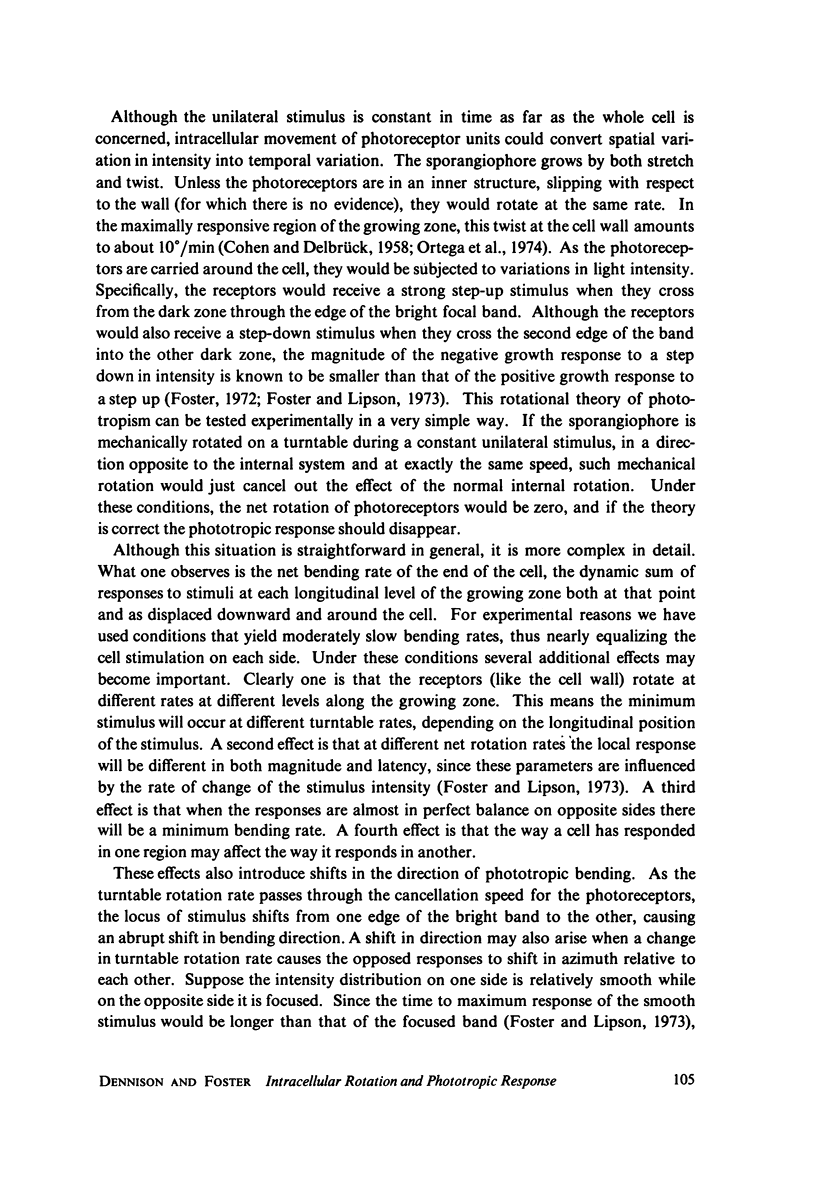




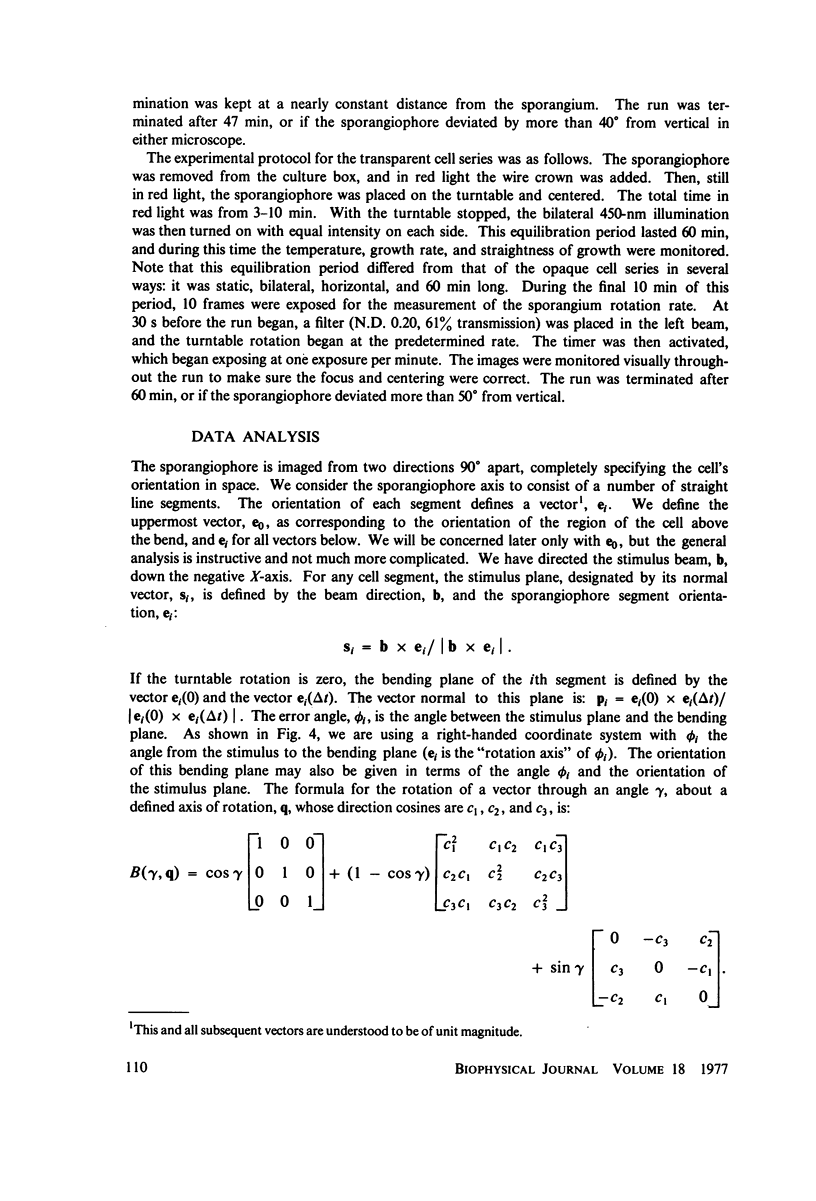

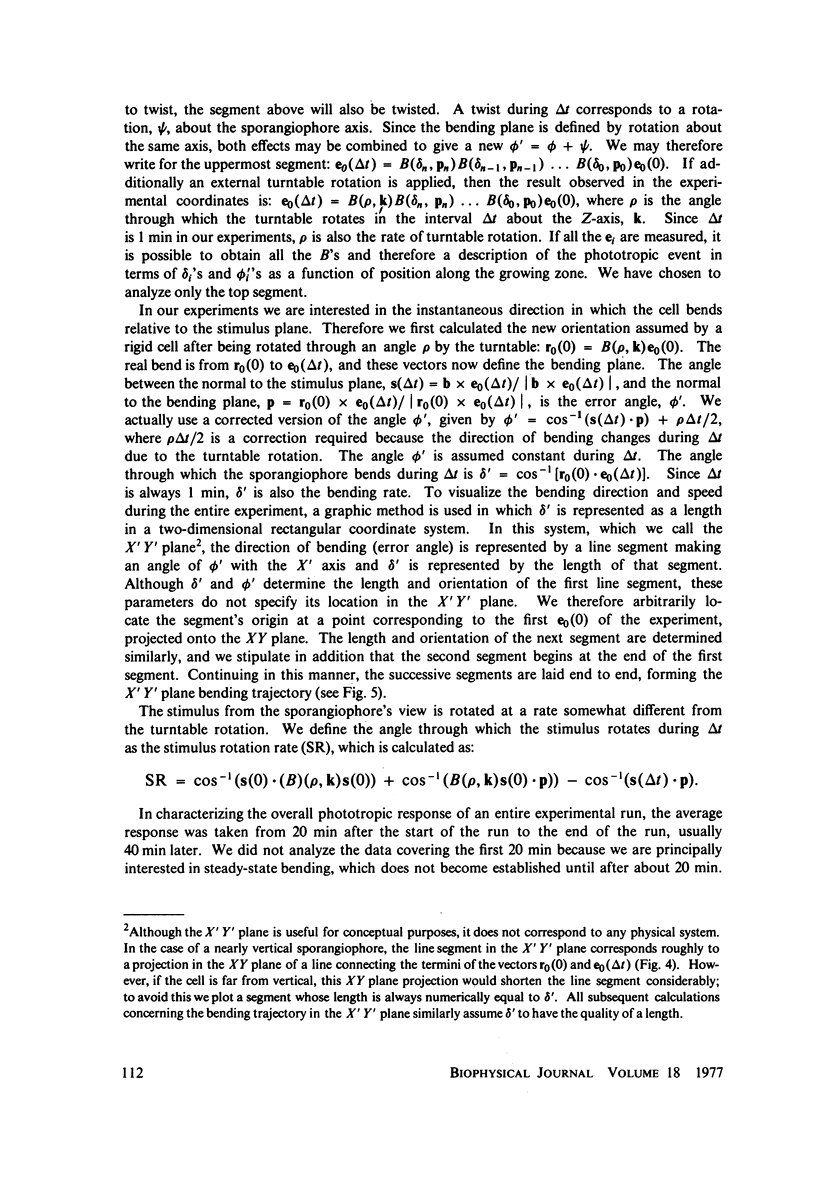




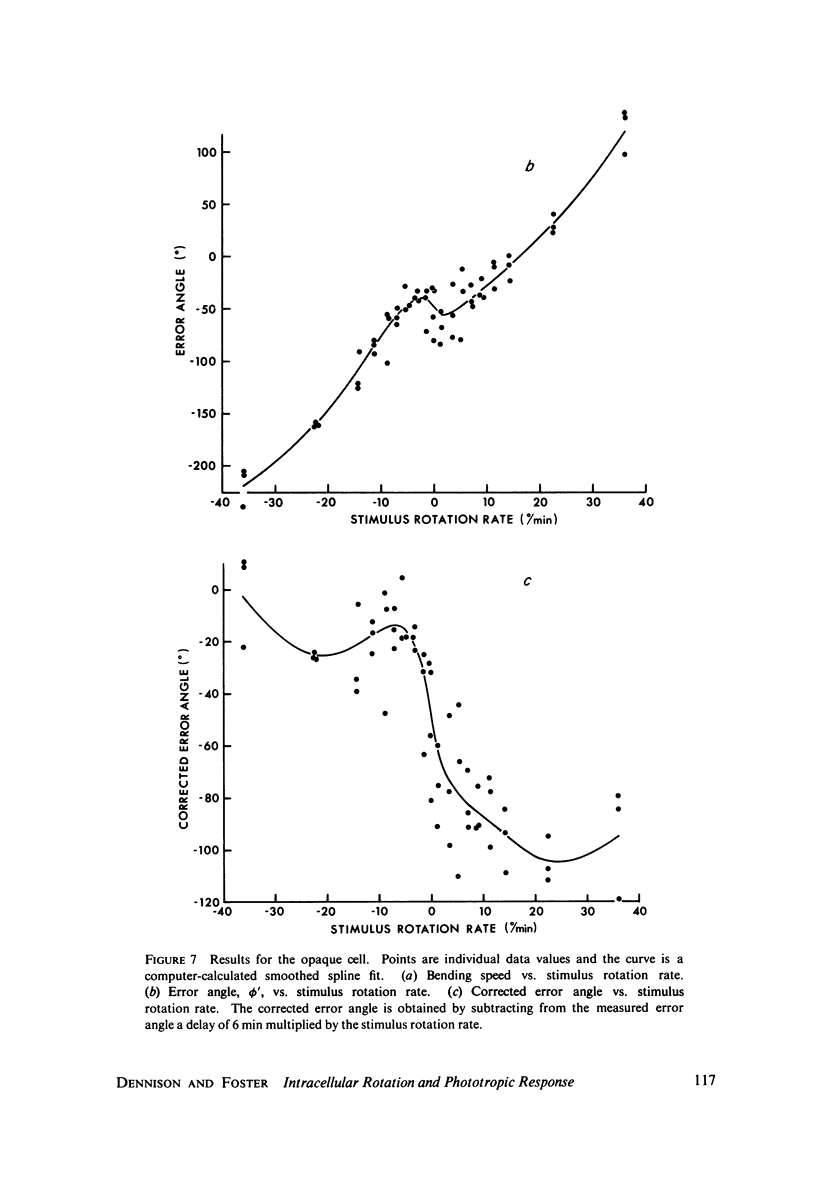




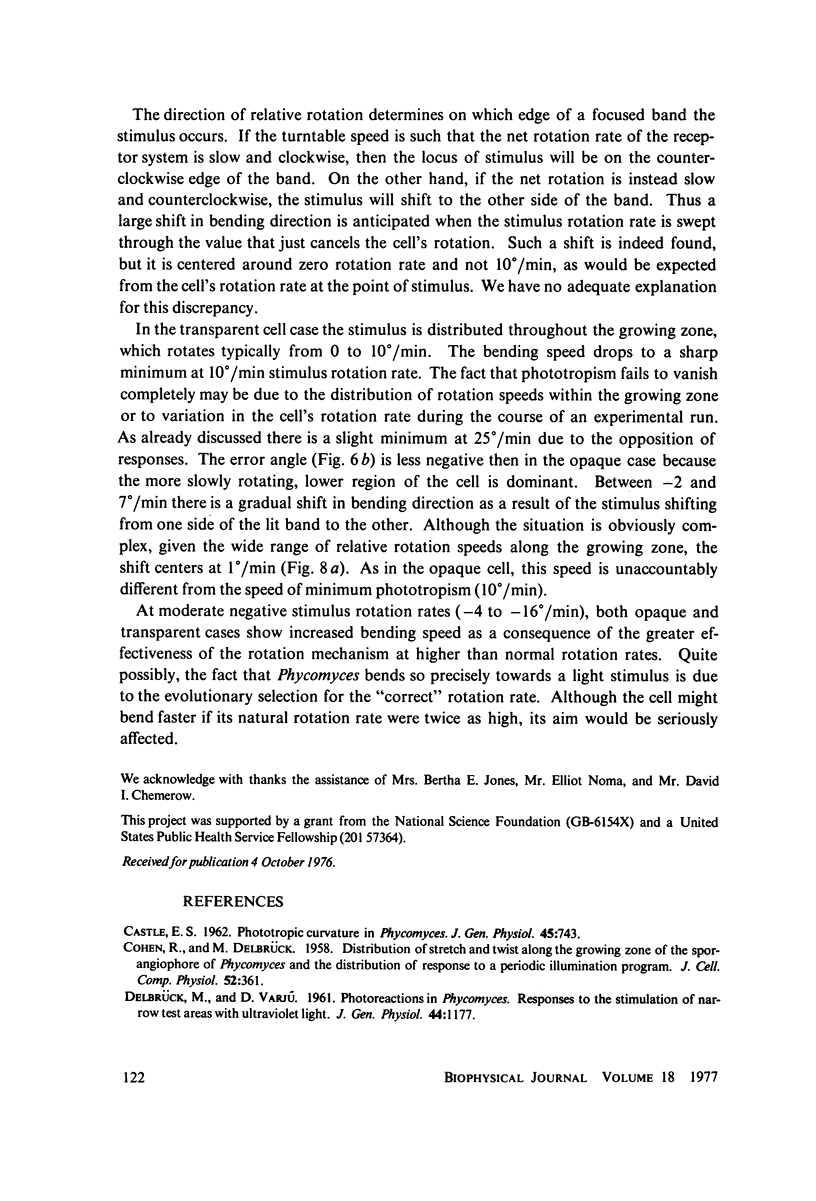

Images in this article
Selected References
These references are in PubMed. This may not be the complete list of references from this article.
- CASTLE E. S. Phototropic curvature in Phycomyces. J Gen Physiol. 1962 Mar;45:743–756. doi: 10.1085/jgp.45.4.743. [DOI] [PMC free article] [PubMed] [Google Scholar]
- COHEN R., DELBRUCK M. Distribution of stretch and twist along the growing zone of the sporangiophore of Phycomyces and the distribution of response to a periodic illumination program. J Cell Physiol. 1958 Dec;52(3):361–388. doi: 10.1002/jcp.1030520303. [DOI] [PubMed] [Google Scholar]
- DELBRUECK M., VARJU D. Photoreactions in Phycomyces. Responses to the stimulation of narrow test areas with ultraviolet light. J Gen Physiol. 1961 Jul;44:1177–1188. doi: 10.1085/jgp.44.6.1177. [DOI] [PMC free article] [PubMed] [Google Scholar]
- DENNISON D. S. STEADY-STATE PHOTOTROPISM IN PHYCOMYCES. J Gen Physiol. 1965 Jan;48:393–408. doi: 10.1085/jgp.48.3.393. [DOI] [PMC free article] [PubMed] [Google Scholar]
- Dennison D. S., Bozof R. P. Phototropism and local adaptation in Phycomyces sporangiophores. J Gen Physiol. 1973 Aug;62(2):157–168. doi: 10.1085/jgp.62.2.157. [DOI] [PMC free article] [PubMed] [Google Scholar]
- Foster K. W., Lipson E. D. The light growth response of Phycomyces. J Gen Physiol. 1973 Nov;62(5):590–617. doi: 10.1085/jgp.62.5.590. [DOI] [PMC free article] [PubMed] [Google Scholar]
- Ortega J. K., Harris J. F., Gamow R. I. The analysis of spiral growth in phycomyces using a novel optical method. Plant Physiol. 1974 Mar;53(3):485–490. doi: 10.1104/pp.53.3.485. [DOI] [PMC free article] [PubMed] [Google Scholar]



